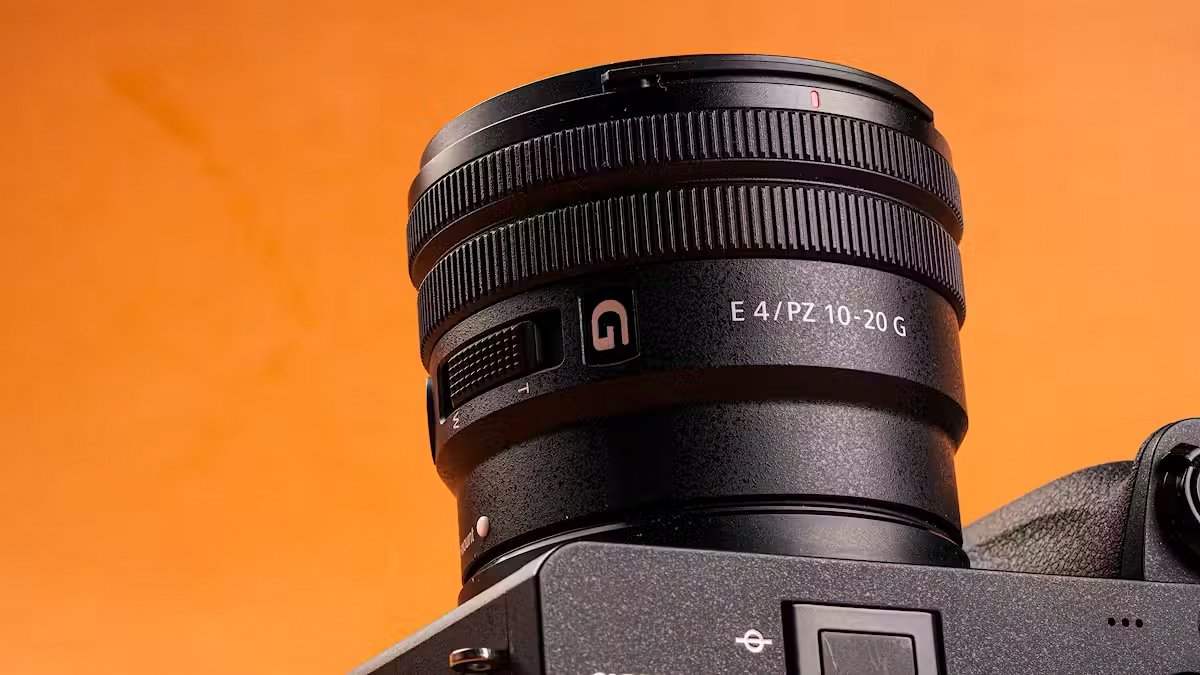Sony 10-20 f/4 G Review | Feel The Power (Zoom)
Introduction
The Sony 10-20mm power zoom lens is a unique ultra-wide lens for APS-C cameras. The power zoom lens is optimized for video, but can still shoot photos with as well. This lens is 15-30 full-frame equivalent, which makes it a great walking-around lens for capturing wide landscapes, vlogging, or zooming in to get some closer shots. Let’s go over the details of this lens and I’ll give you my thoughts at the end.
Price, Weight & Dimensions
The 10-20mm costs $750 and has an aperture range from f4 to 22. It is 2.7 by 2.2 inches and weighs 6.3 ounces.
Build Quality
The build quality is very good for the amount of features packed onto this lens. The lens has an AF/MF switch, focus ring, focus hold button, zoom rocker, and zoom ring - all on a very small lens.
It has 7 aperture blades, a 62mm front thread and is dust and moisture resistant design
Zoom
Every time you turn on/off the camera, the lens will always be at 10mm. The lens can be zoomed by the zoom lever on the lens or the zoom ring. It’s easy to confuse the zoom ring and focus ring in my testing, as I was always adjusting the wrong ring. These are very similar is size and close together, so I’d love to see some kind of labeling on these rings. You can also zoom this lens from certain cameras, gimbals, sony shooting grip, or the app, but I didn’t get a chance to try these features out. These seem like they would be a more difficult way of controlling zoom, minus the gimbal maybe.
Autofocus
The autofocus on the 10-20mm is great for both photos and videos. I was walking around with this lens and had no issues with hunting for focus or missing the area I had selected on the camera. This is great since this is mainly focused at video shooters, having quick, reliable and silent autofocus is a must. Especially at this price point.
Sharpness & Image Quality
Sharpness and image quality with the 10-20mm at f4 is good in the middle, with softer edges of the frame at 10mm. At 5.6 the edges are sharper and have more contrast. At F/11 the lens starts to get a little softer in the corners again. At 20mm the lens is sharp in the center and the corners at f/4. Overall great image quality out of this lens and have been happy with the performance, minus the corner sharpness at the lower apertures.
Flare
For flaring, the 10-20mm has minimal flaring. Even for an ultra wide lens like this with a lot of possible areas for light to enter the front of the lens, the flare control is pretty good with the 10-20.
Chromatic Abberation
Chromatic aberration are well controlled in my testing on the 10-20mm. This lens’s maximum aperture of f4 may have something to do with that, but when pixel peeping I wasn't able to see much color fringing.
Bokeh
The Bokeh with the 10-20 is difficult to achieve without having your subject close to the lens, since the widest aperture is f/4, you’ll want to be shooting at 20mm for the best bokeh. That being said, even then the bokeh is nothing extreme unless the subject is very close to the lens.
Minimum Focusing Distance
With a minimum focusing distance of 5.1 from the sensor, the lens can focus about 3 inches away from the end of the lens. It is possible to get some background blur, but you’ll have to be very deliberate with how you use this lens to do so.
Focus Breathing
A great part about this lens, especially for video shooters is the lack of focus breathing at t10 and 20mm. This is great since this is a hybrid lens, but I feel like leans more towards video with all of it’s features.
Stabilization
The 10-20mm, like many other Sony lenses, lacks any kind of optical steady shot in the lens itself. Modern Sony bodies have stabilization build in to them these days, so that can be used, but the lens itself lacks OSS.
Conclusion
The 10-20mm is a very unique lens for APS-C cameras. The wide focal length and power zoom make it a great lens for traveling, vlogging, or general walk-around videos.
The build quality, size, and weight of these recent Sony APSC lenses has been great to pair with the smaller APSC bodies for a small kit that isn’t a chore to lug around with you if you’re out traveling or handing your camera all day.
There is one thing I didn’t use on this lens though. And it’s one of the biggest features of the lens.
I honestly don’t find myself using the power zoom feature much while shooting video at such a wide focal length, but I did find myself using it while I wasn't filming to adjust the zoom and recompose my shots. The focal range is great, but this probably isn’t how it was intended to be used considering it’s a power zoom lens.

